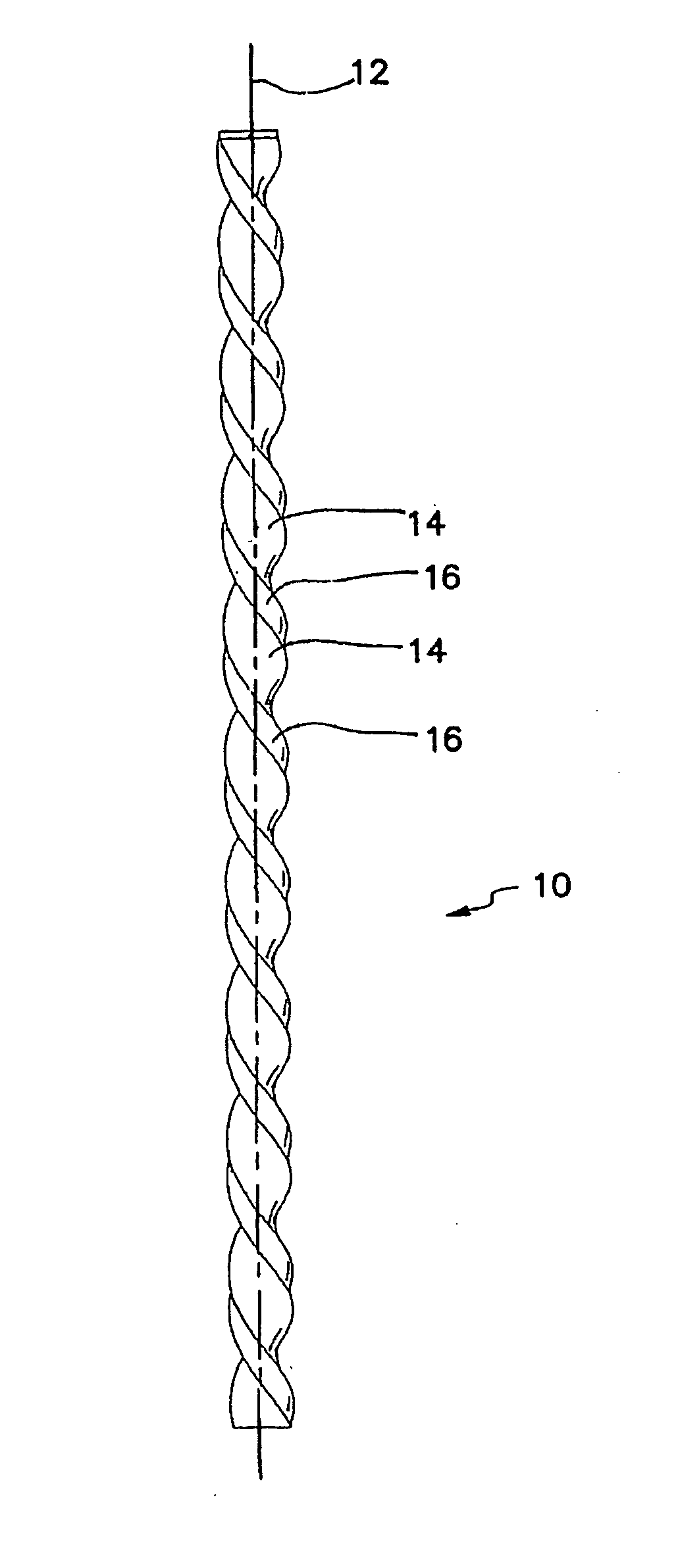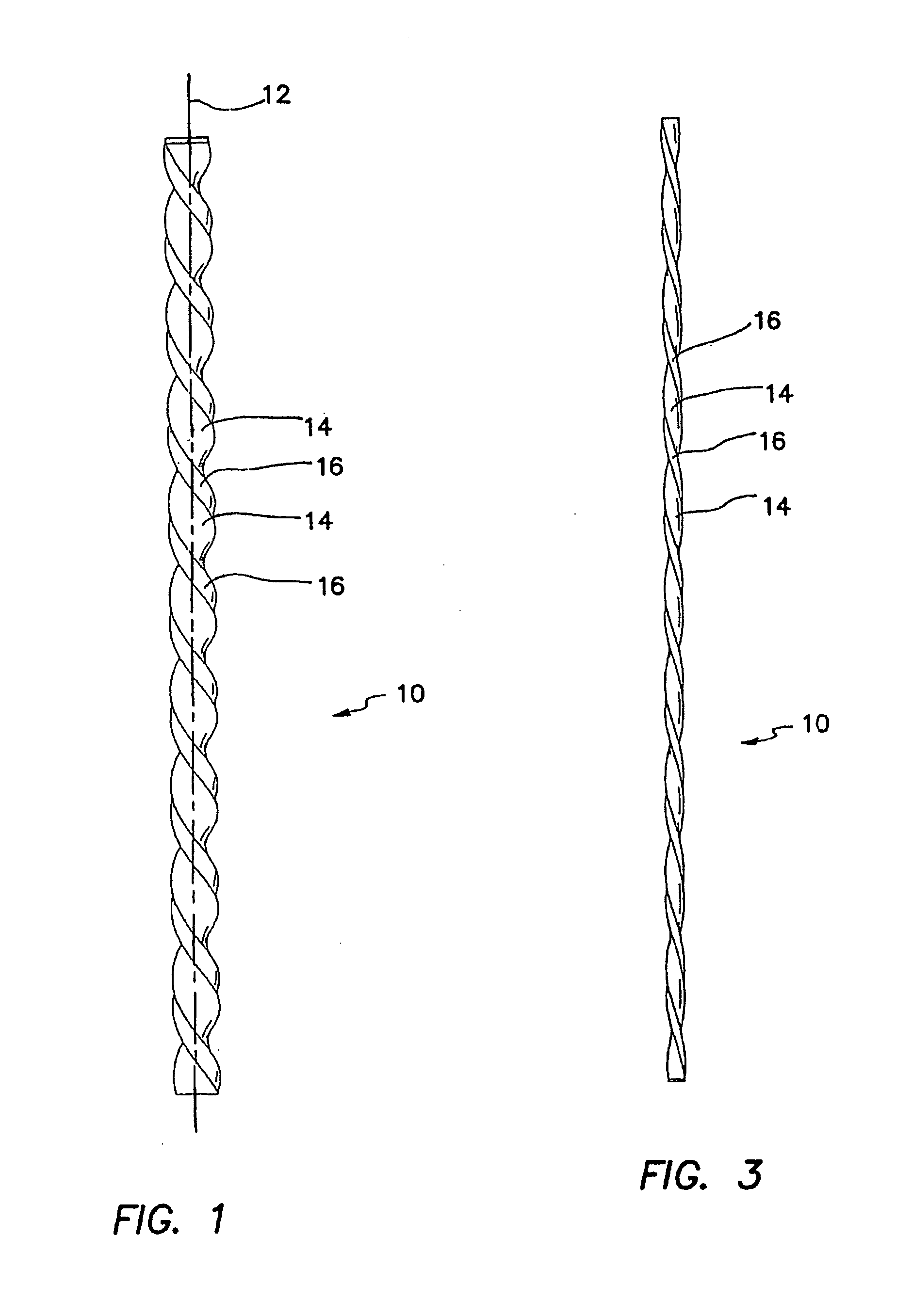Helical guidewire
- Summary
- Abstract
- Description
- Claims
- Application Information
AI Technical Summary
Problems solved by technology
Method used
Image
Examples
Embodiment Construction
[0025] FIG. 1 illustrates a helical guidewire 10 in accordance with the first embodiment of the invention. Guidewire 10 is formed of a biocompatible material twisted around a longitudinal axis 12. FIG. 2 illustrates a cross-section of the guidewire 10 having a first longitudinal edge 14 and a second longitudinal edge 16. Guidewire 10 is preferably formed from a kink-resistant material such as Nitinol, stainless steel, titanium or other metallic or polymer alloy having spring wire characteristics. In general, although guidewire 10 can be formed from other materials, metals are desirable as they enhance fluoroscopic imaging. Metals further enhance torquability and pushability along the entire guidewire, both at the proximal portion and at the distal portion.
[0026] The guidewire 10 may be formed by rotating a piece of wire about its longitudinal axis 12 or by molding and / or grinding. The first and second longitudinal edges 14 and 16, respectively, thus take a helical configuration such...
PUM
 Login to View More
Login to View More Abstract
Description
Claims
Application Information
 Login to View More
Login to View More - Generate Ideas
- Intellectual Property
- Life Sciences
- Materials
- Tech Scout
- Unparalleled Data Quality
- Higher Quality Content
- 60% Fewer Hallucinations
Browse by: Latest US Patents, China's latest patents, Technical Efficacy Thesaurus, Application Domain, Technology Topic, Popular Technical Reports.
© 2025 PatSnap. All rights reserved.Legal|Privacy policy|Modern Slavery Act Transparency Statement|Sitemap|About US| Contact US: help@patsnap.com



